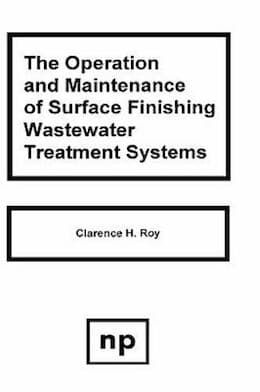
-----
Waste disposal methods for hydrofluoric acid
Would anybody know of any specific methods to neutralize and dispose used Hydrofluoric Acid. Please let me know. Thank you!
Ajit Menon- Rapid City, South Dakota
2000
by Clarence Roy

on eBay or Amazon
or AbeBooks
(affil link)
by Matsuo Tomonori (Editor)
or Amazon
or AbeBooks
(affil link)
Disposal of hydrofluoric can go two ways:
If your receiving stream (meaning surface water OR sewer) has no fluoride limitation, simple neutralization with caustic soda ⇦liquid caustic soda in bulk on
Amazon [affil link]
(sodium hydroxide) should be enough. If there are no regulated metals in the stream, that's it. With the current state of discharge regulations it's rare to have no fluoride limit.
If you have regulated metals or a limit on fluoride, lime neutralization/precipitation following by settling or microfiltration is recommended.

Bill Vins
microwave & cable assemblies - Mesa (what a place-a), Arizona
2000
Yes. It's treated with calcium chloride and lime, for neutralization and fluoride removal. You dose with about 1/2 ounce per gallon of calcium chloride, then add
hydrated lime
[affil link] to a pH of about 9. Then, floc out the solids with an anionic polymer.
If you do not need to treat for fluoride, you can neutralize the acid with caustic, instead. You will get much less sludge.
Do a bench scale test first to determine the appropriate dilution factor, if any. If the acid is really strong it may heat up excessively during neutralization, causing the release of HF vapors, and possible damage to equipment. Also, watch the pH probe...during the early stage of neutralization when there is still a lot of free HF,the glass bulb can easily be dissolved.

Dave Wichern
Consultant - The Bronx, New York
2000
Yes, the waste HF can be treated by adding Ca(2+) ion to the tank. For the source of Ca(2+) ion, I have tried CaCl2, Ca(OH)2, and CaCO3. Among them, the process rate for CaCl2 is fastest, while the CaCO3 is the least. However, if taking the cost into consideration, it will be the CaCO3. I am working on several reusing projects mainly to produce the CaF2. So far it works very smoothly.
Nan-Min WuYuanpei University - Hsin-Chu City
March 18, 2011
Q, A, or Comment on THIS thread -or- Start a NEW Thread
